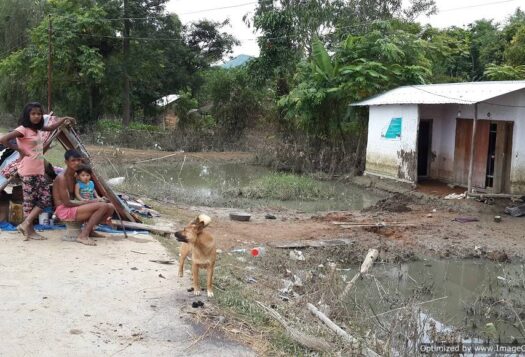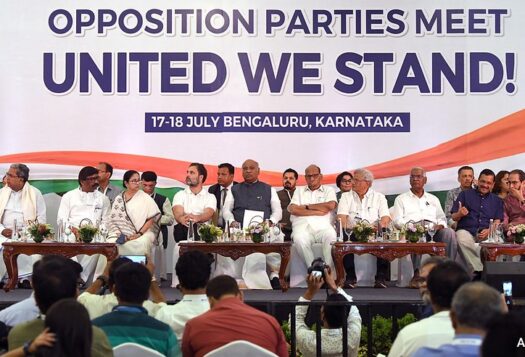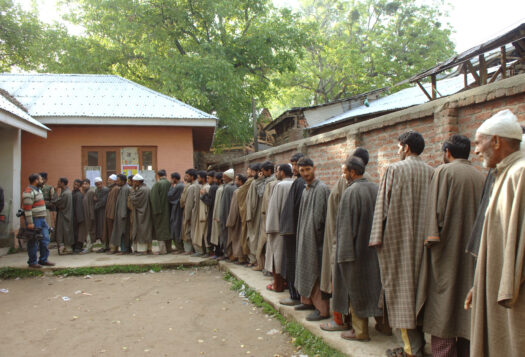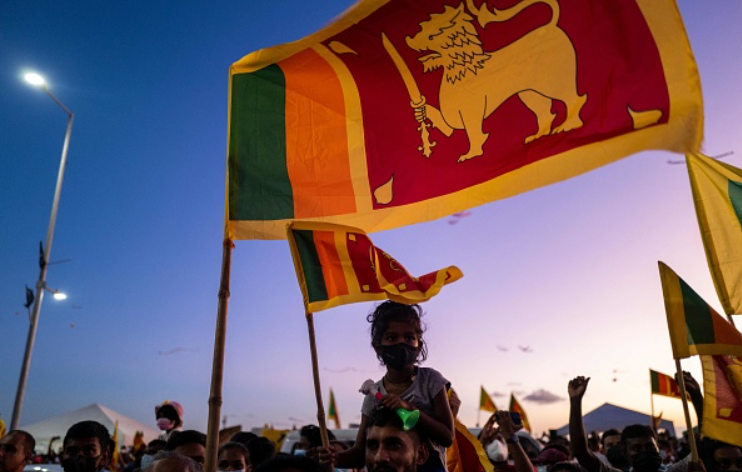
On the evening of April 2nd, Sri Lankan President Gotabaya Rajapaksa declared a weekend-long state of emergency on the island after protests erupted outside his Colombo residence. While Sri Lanka is no stranger to periods of state of emergency—the last was imposed as recently as 2018 due to anti-Muslim riots—this time was different.
The protests surrounding Rajapaksa’s home followed weeks of building unrest due to massive shortages of fuel and essential food items and multi-hour power cuts: everyday manifestations of Sri Lanka’s worst economic crisis in decades. Sri Lanka’s enormous debt load and depletion of foreign reserves, exacerbated by a faltering tourism industry due to the COVID-19 pandemic, have highlighted economic mismanagement by Rajapaksa’s government. By the third day of protests, the entire Sri Lankan Cabinet had resigned.
Over the past two decades, governance in Sri Lanka has been a family affair dominated by the Rajapaksas. Gotabaya’s older brother Mahinda is currently prime minister, serving previously as Sri Lanka’s president from 2005 to 2015. He oversaw the Sri Lankan government’s brutal offensive against the Liberation Tigers of Tamil Eelam (LTTE) that eventually ended the civil war in 2009. Younger brothers Basil and Chamal occupied the positions of finance minister and irrigation minister, respectively, before resigning on April 3rd. Gotabaya’s nephew and Mahinda’s son, Namal Rajapaksa, also resigned as minister for sports and youth but is still thought to be eyeing higher political office in the future.
Although the Rajapaksas have sustained overwhelming popularity and electoral success in recent years, especially from the Sinhala Buddhist majority, their handling of the economic crisis and response to the ensuing public outrage has garnered widespread condemnation. Sri Lanka’s economic crisis exposes the Rajapaksa family’s increasing consolidation of power, especially to segments of the Sri Lankan population who had previously supported the Rajapaksas under the pretense of national security. Consequently, the hold that the Rajapaksas have had on Sri Lankan politics for the past decades is in jeopardy, as they cannot resort to their familiar authoritarian and populist tactics to quell economic grievances shared by a majority of Sri Lankans.
The Rise of the Rajapaksas
The Rajapaksa family’s powerful grip on Sri Lankan politics started after then-President Mahinda Rajapaksa gained widespread popularity for defeating the LTTE to end 26 years of civil war—a task at which all of his predecessors had failed. He subsequently won re-election in 2010 by a landslide and swept a majority of seats with his United People’s Freedom Alliance Party at the 2011 local elections, vowing to bring development and stability to the war-torn nation. His message primarily appealed to Sinhala Buddhist voters, who constituted a majority of his voter base.
The hold that the Rajapaksas have had on Sri Lankan politics for the past decades is in jeopardy, as they cannot resort to their familiar authoritarian and populist tactics to quell economic grievances shared by a majority of Sri Lankans.
It was in this political climate that Mahinda Rajapaksa secured a two-thirds majority in Parliament to pass the 18th Amendment to the constitution, removing the two-term limit for the presidency and restricting the ability of the Election Commission to prevent the use of state funds in campaign activities. The Rajapaksa administration also increased the presence of the Sinhalese-dominated Sri Lankan security forces in the civil administration, development activities, and commercial ventures of the North and East, reducing the power of civilian governance and furthering the militarization of the country’s Tamil-majority areas. Rajapaksa justified his authoritarian policies on the pretext of securing post-war stability, all while remaining popular among large swaths of the Sinhalese population.
Even when Mahinda Rajapaksa was unexpectedly ousted in the 2015 presidential election, the new Yahapalana government headed by Maithripala Sirisena found itself reverting to the autocratic tendencies of its predecessor. Sirisena won after campaigning for numerous political reforms from the Rajapaksa administration, including abolishing the “unlimited powers” of the executive presidency and returning to a more tolerant stance on religion. These promises fully unraveled in 2018, when Sirisena announced that he would be replacing his prime minister, Ranil Wickremesinghe, with Mahinda Rajapaksa after months of growing tensions on pressing policy issues. The ensuing constitutional crisis signaled that Sri Lanka’s illiberal past could easily shape its present at any moment.
Months later, suicide bombers from a local Islamist group launched explosives in six hotels and churches across the country on Easter Sunday in 2019, compounding the political instability already created by the constitutional crisis. Reported intelligence failures that enabled the bombings fed into populist narratives that Sri Lanka’s national security was under attack, with many even blaming Sirisena for his lack of leadership during the crisis. The Easter Sunday bombings fueled post-war Sinhalese Buddhist nationalism and renewed calls for greater executive power, paving the path for the Rajapaksas’ return to the top office.
In the aftermath of the attacks, Gotabaya Rajapaksa won the presidency on promises to restore “national security” and keep Sri Lankans safe. However, this manifested in efforts to amass more power in the executive through the passage of the 20th Amendment to the constitution, which allowed the president to dissolve Parliament early, hire and fire the prime minister, and appoint judges as well as the heads of the election, anti-corruption, and other supposedly independent commissions. Rajapaksa also made renewed appeals to Sinhala Buddhist nationalism and appointed ex-military officers to key positions in the civilian administration, including some accused of war crimes.
After propelling their Sri Lanka Podujana Peramuna (SLPP) to a supermajority victory in 2020, the Rajapaksa family seemed invincible, destined to hold on to power in Sri Lanka despite growing concerns about their ability to resolve a looming economic meltdown.
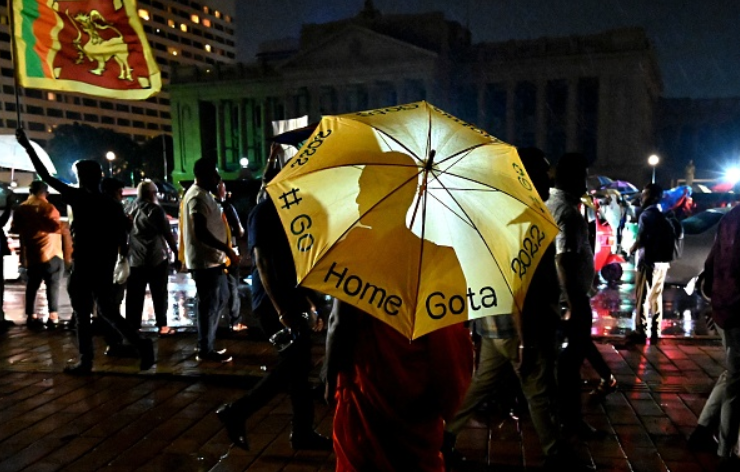
The Beginning of the End?
Notably, support – or lack thereof – for the Rajapaksas had previously been drawn on ethnic and religious lines. Today, protesters span all segments of Sri Lankan society, united in their anger toward the current government. Mass protests have even erupted in traditional electoral strongholds for the Rajapaksas, including outside the prime minister’s own residence in Tangalle, located in the Hambantota District. Other cities with majority Sinhalese populations, such as Galle, Matara, and Moratuwa, also witnessed large demonstrations, revealing that many of the same voters that had enabled Gotabaya Rajapaksa’s landslide presidential win in 2019 were now angling for Gotabaya’s and Mahinda’s resignations.
The Rajapaksas have exercised the same old authoritarian policies to clamp down on protests with little success. Even as the government enacted a social media ban, arrested dozens for violating curfew, and police fired tear gas and water cannons into the crowds of demonstrators, protests have remained strong and even swelled in size. Consequently, the government has rolled back some of the initial measures they took to curb the mass protests, signifying that the Rajapaksas’ usual “national security” measures will no longer work for a population realizing—and suffering—the consequences of empowering autocratic leaders.
Sinhalese Buddhists are not the only first-time protesters out in the streets. Younger Sri Lankans are also responsible for driving the sustained anger against the regime, with many becoming disillusioned with Sri Lanka’s authoritarian political system and its ability to ensure the country’s future prosperity. Analysts have even called this an “Arab Spring” moment for Sri Lanka, predicting that the mass anti-government protests might lead to regime change, as seen in Tunisia in 2011. With only Gotabaya and Mahinda left in charge, it seems like the beginning of the end of the Rajapaksa family’s dominance in Sri Lankan politics.
Implications
While the widespread backlash against the Rajapaksas seems poised to reconfigure Sri Lanka’s political landscape, it remains unclear if the Rajapaksas’ departure will fully dismantle the institutionalized Sinhala Buddhist nationalism that enabled their ascendance to power in the first place. Ethnoreligious minorities and human rights activists have long advocated for measures that have yet to receive widespread support, such as post-war transitional justice measures and the repeal of discriminatory policies, like the draconian Prevention Against Terrorism Act. Though anti-government protests have mainly focused on removing the Rajapaksa family from power, widespread discontent has brought renewed focus to the government’s human rights violations during the civil war and continued repression of ethnic minorities, which could spur delayed action on these demands.
While the widespread backlash against the Rajapaksas seems poised to reconfigure Sri Lanka’s political landscape, it remains unclear if the Rajapaksas’ departure will fully dismantle the institutionalized Sinhala Buddhist nationalism that enabled their ascendance to power in the first place.
Though protests have continued for nearly a month, the current government has taken few actions to respond. Despite the appointment of a new cabinet, Gotabaya and Mahinda Rajapaksa have still refused to step down from their positions. As Sri Lankans across the socioeconomic spectrum still struggle to afford basic necessities, which have skyrocketed in price with the plummeting value of the Sri Lankan rupee, the political demands that have accompanied economic hardship have still not been satisfied and may remain a hurdle longer than expected.
Nonetheless, the Rajapaksas have suffered some political blows. They face a no-confidence vote by the opposition and demands that they repeal the 20th amendment. During Mahinda Rajapaksa’s televised address to protestors on April 11, frequent reminders of the first Rajapaksa administration’s civil war victory did little to assuage public dissatisfaction with the brothers—a harbinger that the Rajapaksa family may no longer be able to rely on post-war patriotism for popular support. The question remains if the resignation of the Rajapaksas—if it even occurs—will yield further political instability or prompt a genuine political restructuring for South Asia’s oldest democracy.
Editor’s note: A version of this piece originally appeared in The Diplomat and has been re-published with permission from the editors.
***
